There’s something undeniably thrilling about the atmosphere in a soccer stadium. The collective anticipation that builds up before the game, the roar of the fans as the players step onto the pitch and the spontaneous eruptions of joy (or despair) as goals are scored… But not all stadiums are created equal. Some, due to their history, architecture, or the sheer passion they inspire, have become legendary in their own right. That’s why we have created a list with the top 10 soccer stadiums so you can experience these iconic venues and discover what makes each one truly special.
Are you ready to step into the pitch and feel the passion? Let us, Barça Academy US, take you on a tour through these impressive stadiums.
Unveiling the top 10 soccer stadiums
Our journey around the world’s best soccer stadiums will take us across continents, from Europe’s footballing heartlands to the vibrant soccer cultures of South America and Asia. We’ll explore iconic venues, but if you are expecting very well-known and recognized stadiums, then, this may not be the right list for you — because we’re also shining a spotlight on hidden gems and unique arenas that deserve a place on any true soccer fan’s map. Let’s start!
The allure of Camp Nou, Barcelona
Imagine the thrill, the goosebumps, the pure unadulterated excitement of being one of the 99,354 spectators in the largest stadium in Europe – the Camp Nou! Nestled in the heart of Barcelona, Spain, this iconic soccer arena has been the home ground of the illustrious Barcelona FC since 1957. From local derbies to high-stakes Champions League matches, Camp Nou has seen it all, earning itself the reputation of being one of the most electrifying soccer stadiums worldwide.
History speaks volumes
Over the years, the Camp Nou has been the battlefield for numerous historic matches. It has witnessed the extraordinary talents of soccer legends like Johan Cruyff, Lionel Messi, and Ronaldinho, to name just a few. But beyond the soccer spectacle, the stadium is also known for its remarkable architecture, making it a favorite among both soccer fans and architecture enthusiasts.
Architecture like no other
The stadium’s design is a visual treat of balance and symmetry with an undulating roof that offers a panoramic view of the pitch. The electric atmosphere during match days, coupled with the sophisticated design, creates an unforgettable experience for every visitor.
More than just soccer
A visit to Camp Nou isn’t just about the 90 minutes of exhilarating soccer. It’s about soaking in the vibrant atmosphere, the passionate chants of the fans, the heart-pounding anticipation of a goal. It’s about being part of the ‘Blaugrana’ family, even if just for a day. But the intrigue of Camp Nou extends beyond the match time. The stadium also houses the FC Barcelona Museum, one of the most visited museums in Spain.
The museum is a treasure trove of soccer memorabilia, offering a deep dive into the club’s rich history. With historical kits, trophies, photographs, and even interactive displays, the museum provides a comprehensive journey through the club’s legendary journey.
Experience the stadium tour
Another must-do on every soccer enthusiast’s bucket list is the Camp Nou Experience, a stadium tour that takes you behind the scenes of this stunning arena. Visitors get a chance to walk through the players’ tunnel, visit the dressing rooms, press room, commentary boxes, and even step onto the pitch! The view from the pitch, looking up at the towering stands, is one to cherish forever.
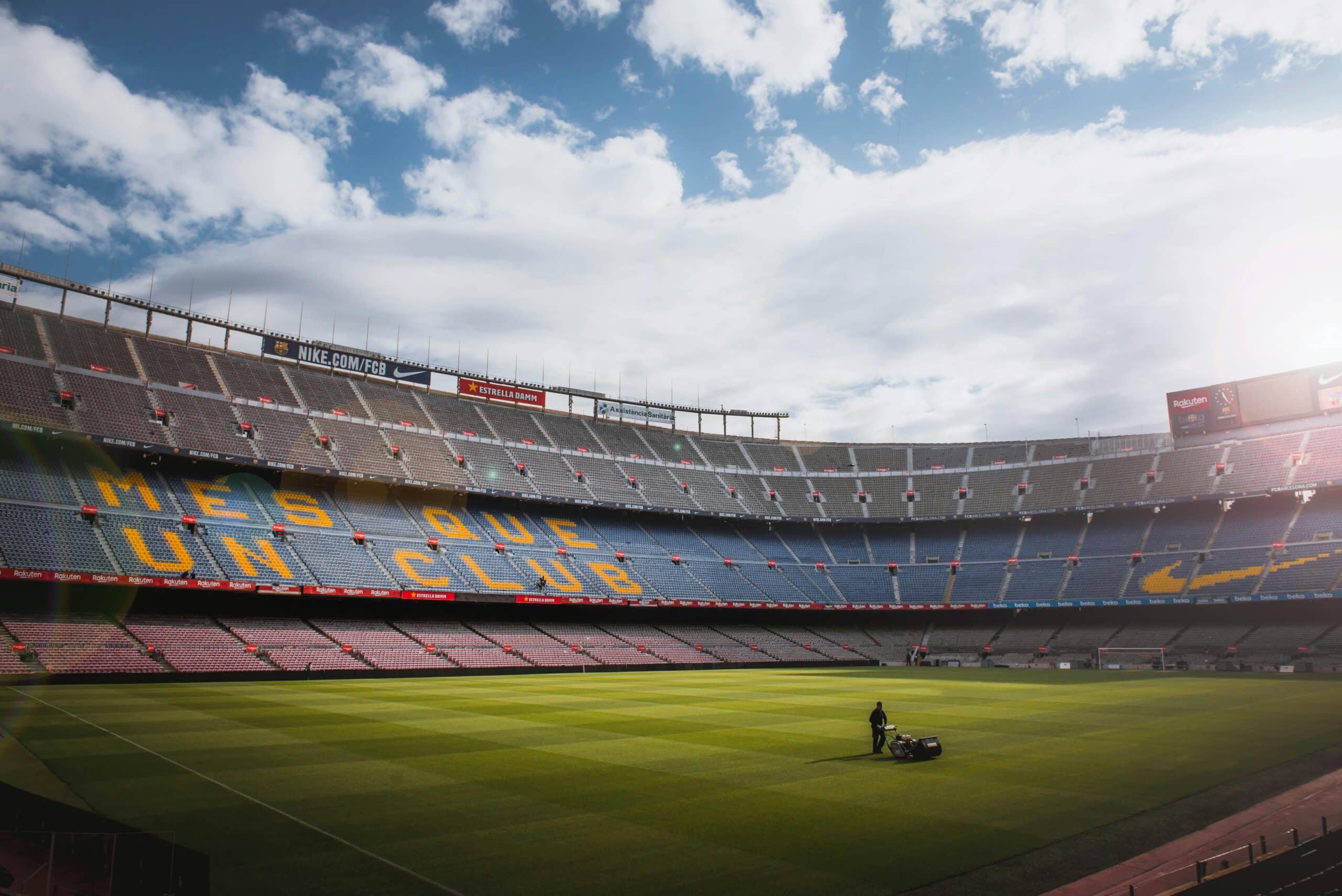
Duyun Sports Complex, China
Located in Guizhou Province, the stadium stands out as a remarkable example of modern sports architecture. One of its most distinctive features is its location: the complex is situated on an island, surrounded by water, which not only enhances its aesthetic appeal but also provides a serene and picturesque setting for sporting events.
This unique positioning allows for panoramic views of the surrounding landscape and creates an immersive experience for spectators and athletes alike. The design of the complex integrates seamlessly with its natural surroundings, reflecting a harmonious blend of architecture and nature.
While specific details about the stadium’s capacity and the types of events it hosts are limited, the Duyun Sports Complex’s innovative location and design make it a notable landmark in the region. Its establishment underscores China’s commitment to developing world-class sports infrastructure that respects and incorporates the natural environment.
Henningsvær Stadium, Norway
Nestled in the picturesque Lofoten Islands, it is renowned as one of the most visually stunning soccer pitches globally. Located in the quaint fishing village of Henningsvær, the stadium is perched on a rocky islet, surrounded by the Norwegian Sea and dramatic mountain backdrops. This unique setting offers panoramic views that blend the rugged natural beauty of the Arctic with the simplicity of a community sports field.
Despite its modest size, with a capacity of around 500 spectators, Henningsvær Stadium has garnered international acclaim for its breathtaking location. The pitch is constructed on leveled bedrock, with a strip of asphalt serving as both a walking path and informal seating area. There are no grandstands; instead, visitors often bring their own chairs to enjoy matches. The surrounding area is dotted with traditional fish-drying racks, adding to the authentic Arctic atmosphere.
Operated by the local amateur club Henningsvær IL, the stadium serves as a hub for community activities, including youth soccer training and local events. Its accessibility is enhanced by the midnight sun during summer months, allowing for games and gatherings at all hours. The stadium’s charm has attracted photographers, filmmakers, and tourists worldwide, making it a must-visit for those seeking a blend of sport and scenic beauty.
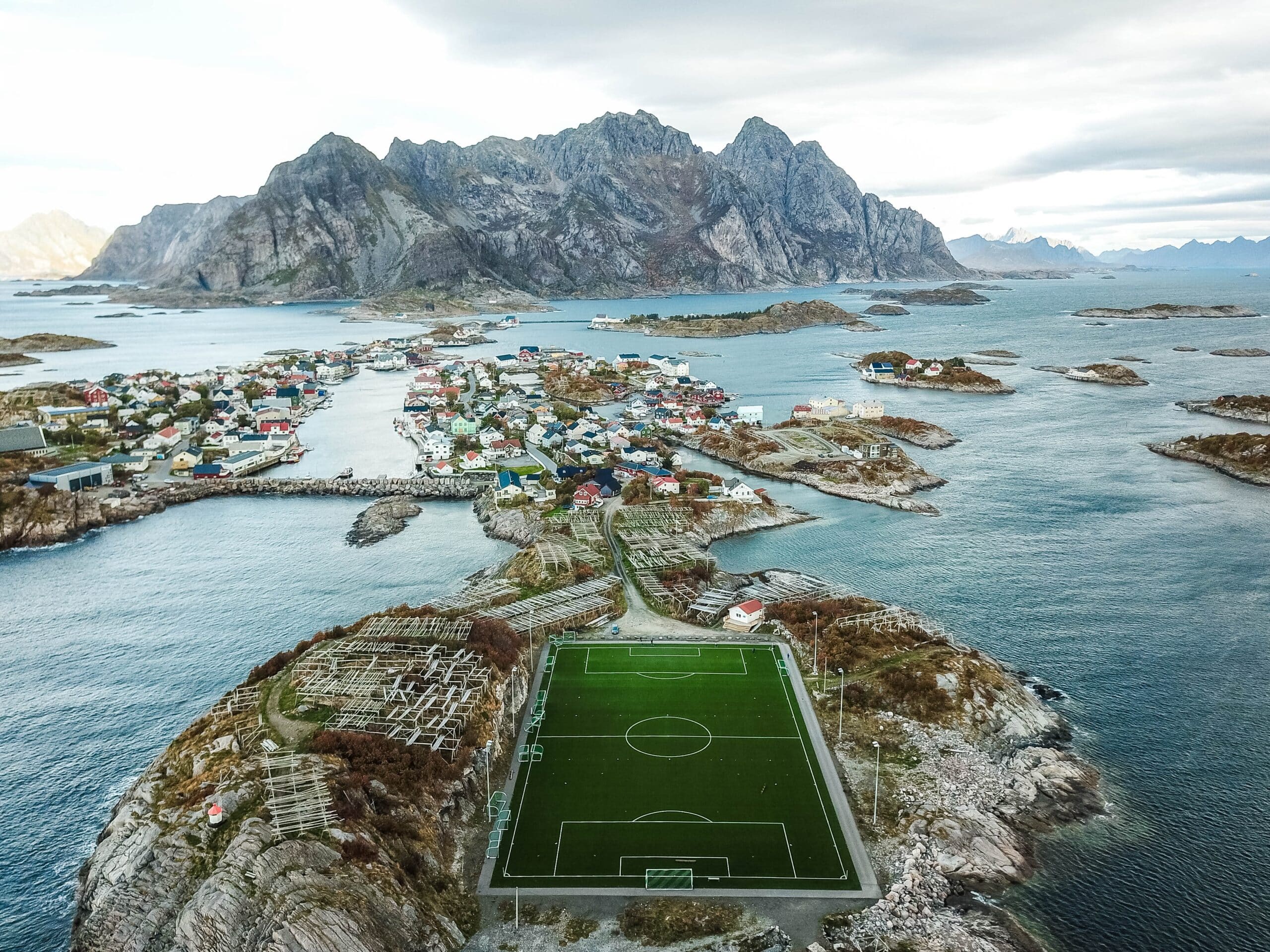
Estadio Centanario, Uruguay
You might be wondering why we chose this stadium in the country’s capital, Montevideo, since at first glance it looks like just any other. The fact is that this is where the very first FIFA World Cup final was played in 1930, marking a historic moment in soccer history that forever changed the sport.
Estadio Centenario boasts a classic design with a seating capacity of around 60,000 spectators. Its iconic façade and grandstands create an imposing yet welcoming atmosphere, while the pitch itself has witnessed some of the most memorable matches in South American soccer. Over the decades, it has been renovated to modern standards but still retains the historic charm that makes it a beloved landmark for fans and players alike.
Estadio BBVA, Mexico
Also known as El Gigante de Acero (“The Steel Giant”), it is a modern soccer stadium located in Guadalupe, a suburb of Monterrey. Opened in 2015, the stadium stands out for its striking design inspired by the region’s industrial heritage, featuring a sweeping, asymmetrical structure clad in metallic aluminum and steel. With a seating capacity of 53,500, fans enjoy an intimate viewing experience thanks to grandstands positioned just 9 meters from the pitch at a steep 34-degree angle—the maximum allowed by FIFA—creating an electric atmosphere. The cantilevered roof extends 55 meters, providing shade and enhancing comfort for spectators.
Beyond its impressive design, Estadio BBVA incorporates cutting-edge technology and sustainability. It is equipped with over 900 screens, including two massive LED displays, and a premium BOSE sound system, delivering an immersive audiovisual experience.
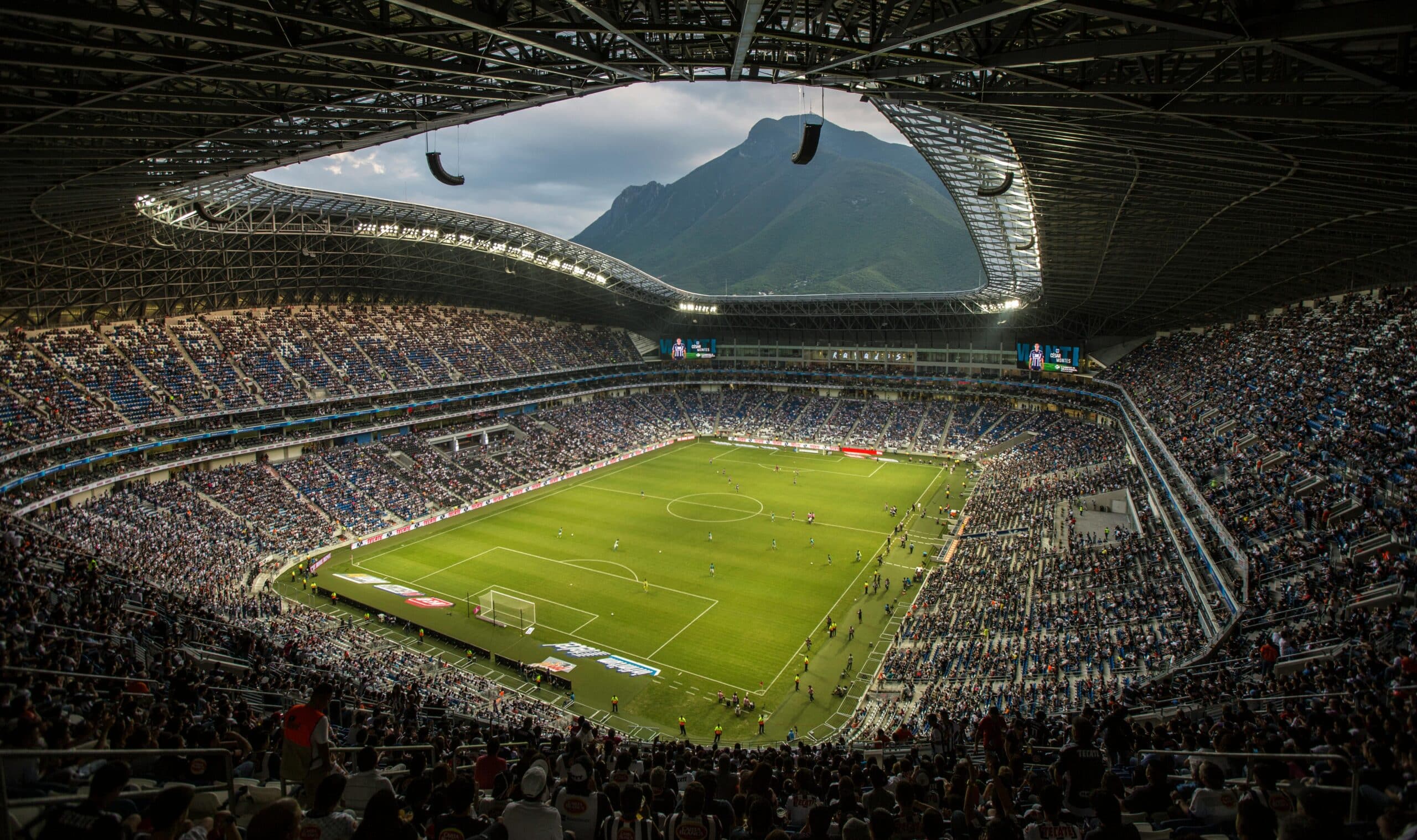
Wembley Stadium, England
Our list of the top 10 soccer stadiums now leads us to London, where we find one of the most iconic soccer venues in the world. It boasts a seating capacity of 90,000, making it the largest stadium in the UK and the second largest in Europe. Its most striking feature is the massive 134-meter-high arch that spans the stadium, serving both as an architectural marvel and a symbol of modern British engineering. The arch also supports the retractable roof, allowing events to take place regardless of weather conditions.
Beyond soccer, Wembley is a versatile arena that hosts a wide range of events, from concerts to major international sports tournaments, including the UEFA Champions League final and England’s home matches. The stadium is renowned for its world-class facilities, excellent sightlines, and state-of-the-art technology that enhances the fan experience. Wembley holds a special place in soccer history, having been the stage for unforgettable moments such as the 1966 FIFA World Cup final, where England won their only World Cup to date, and the 1992 European Cup final, a landmark event for Barça. In that historic match, held at the old Wembley Stadium, Barcelona claimed their first-ever European Cup title with a dramatic 1–0 victory over Sampdoria, sealed by a brilliant extra-time free kick from Ronald Koeman. The triumph not only marked a turning point in the club’s history but also cemented Wembley’s status as a cathedral of European football.
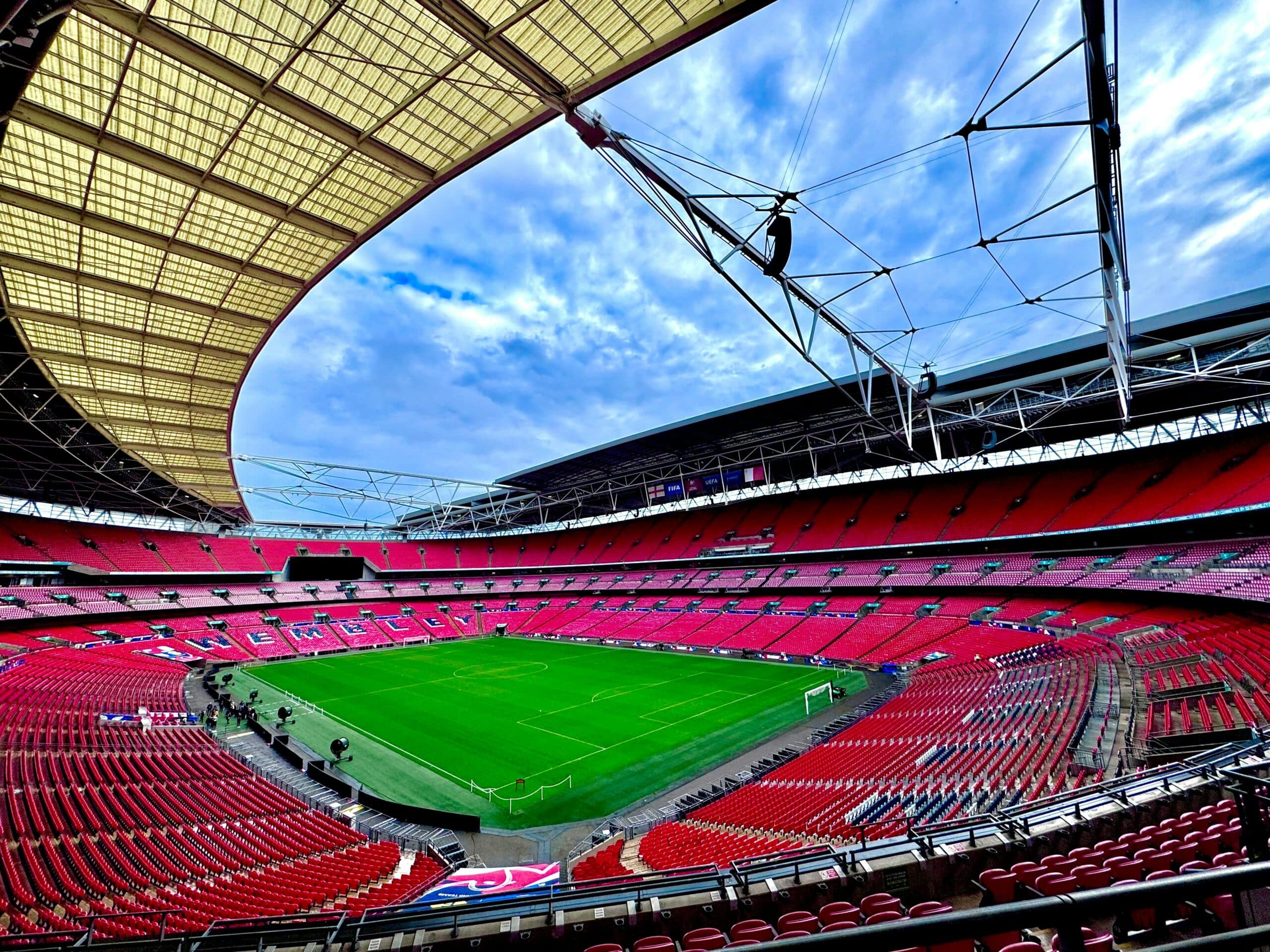
Stadio Pierluigi Penzo, Italy
Located on the island of Sant’Elena in Venice, it is the second-oldest stadium in Italy still in use, having opened in 1913. This historic venue serves as the home ground for Venezia FC and is renowned for its unique setting and rich history. The stadium is accessible by foot or by vaporetto (water bus), making it one of the few soccer stadiums in the world where fans arrive by boat.
Over the years, Stadio Penzo has undergone several renovations. The most recent upgrade in 2021 brought the seating capacity to approximately 11,150. Despite these improvements, the stadium retains its old-world charm, with views of the Venetian lagoon and the nearby Biennale grounds. The club’s return to Serie A in 2021 further highlighted the stadium’s significance in Italian soccer.
Centro Desportivo da Madeira, Portugal
We now travel to the beautiful island of Madeira. Opened in 2007, it features a main stadium with a natural grass pitch suitable for full 11-a-side soccer matches, surrounded by an 8-lane synthetic athletics track homologated by World Athletics. The complex also offers various artificial turf pitches for smaller-sided soccer games, along with facilities for tennis, padel, and indoor sports such as basketball and volleyball, making it a versatile hub for sports enthusiasts.
Set amidst lush greenery, Centro Desportivo da Madeira provides a serene and welcoming environment that promotes physical activity and well-being. Beyond sports, the center includes amenities like a mini-golf course, cycling paths, and a gymnasium, catering to both casual visitors and professional athletes. It serves as a focal point for regional competitions, training camps, and community events, emphasizing accessibility and inclusivity in its design and function, making it an essential part of Madeira’s sporting landscape.
Mmabatho Stadium, South Africa
This is another peculiar and historic venue on our list of top 10 soccer stadiums: located in Mafikeng and built in 1981 during a complex political era, this stadium stands out for its highly unusual architectural design. Unlike typical stadiums, its elevated stands face each other rather than the pitch, meaning spectators must turn their heads to watch the game. This quirky feature has made Mmabatho Stadium both famous and controversial among sports fans and architects alike.
With a seating capacity of around 59,000, Mmabatho Stadium was originally intended as the national stadium for the former Bophuthatswana homeland. Over the years, it has hosted soccer matches, concerts, and political events, although its unconventional design and maintenance challenges have limited its regular use. Despite these issues, the stadium remains a fascinating example of unique sports architecture and an important part of South Africa’s sporting heritage.
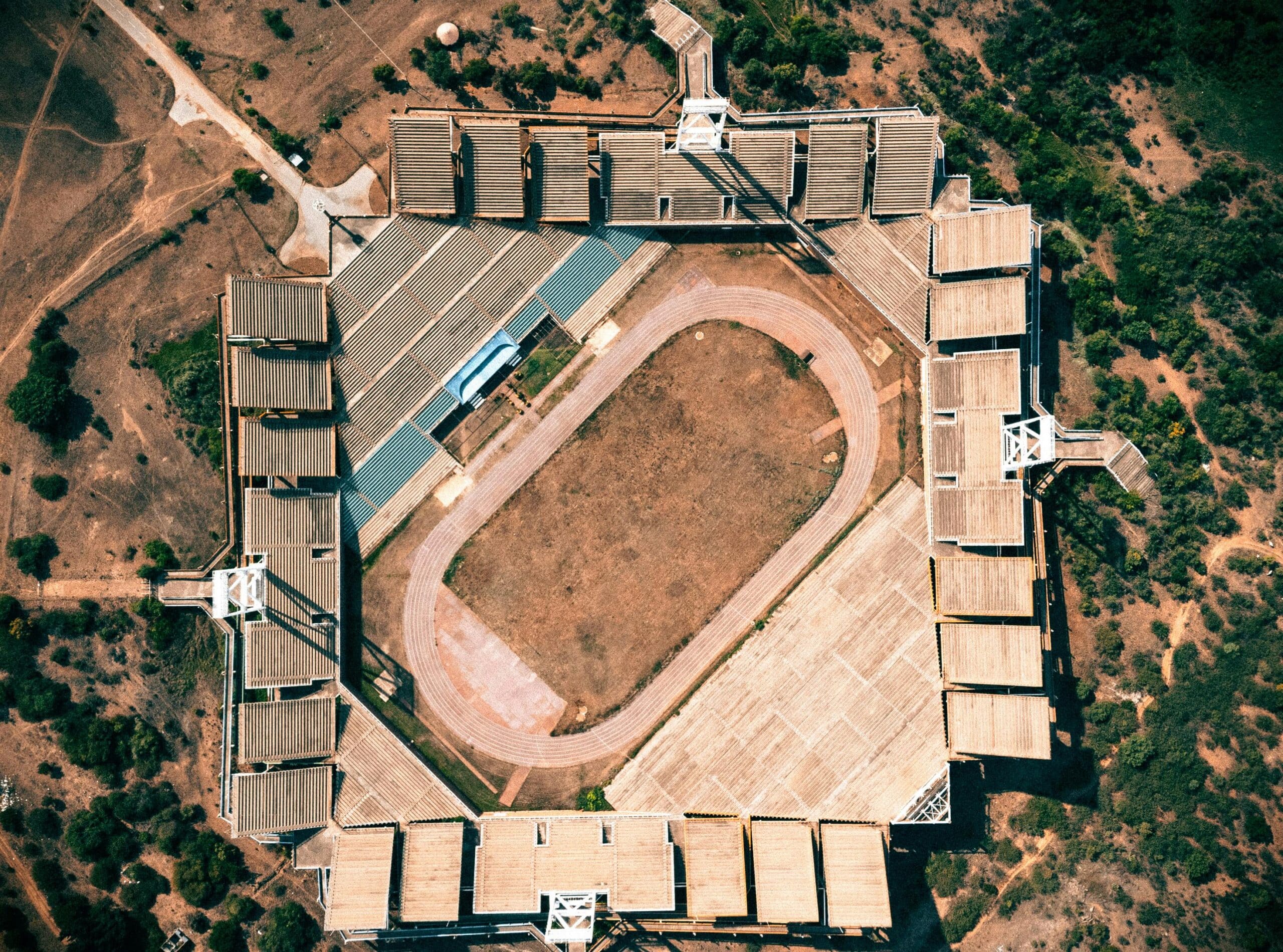
Igralište Batarija, Croatia
Also known as the “Fortress Stadium”, it is a unique soccer ground located in Trogir. Nestled on a small island, this stadium is encircled by three UNESCO World Heritage Sites: the 15th-century Kamerlengo Fortress to the south, St. Mark’s Tower to the north, and the Marmont Glorijet to the west. The Adriatic Sea borders the west side of the pitch, adding to its picturesque setting. With a seating capacity of approximately 1,000, Igralište Batarija serves as the home ground for HNK Trogir, a club founded in 1912.
In 2019, the stadium underwent renovations, including the installation of a synthetic pitch and the construction of new seating arrangements, replacing the old concrete grandstand. The unique location and historical surroundings of Batarija have garnered international attention, with the stadium featured in the “World’s Greatest Sporting Arenas” film series alongside renowned venues like Anfield and Croke Park.
Experience unparalleled soccer action
To sum up our journey through the top 10 soccer stadiums, each venue offers a unique blend of history, architecture, atmosphere, and passion that makes the beautiful game so unforgettable: they all embody the spirit of soccer worldwide.
And if you want to truly feel the passion firsthand and develop your own skills in an environment inspired by the very best, look no further than the US Barça Academy. Here, the legacy of FC Barcelona meets world-class training, connecting young players with the heart of the game and the inspiration of iconic stadiums.
Ready to make your own memories on the field? US Barça Academy awaits!












